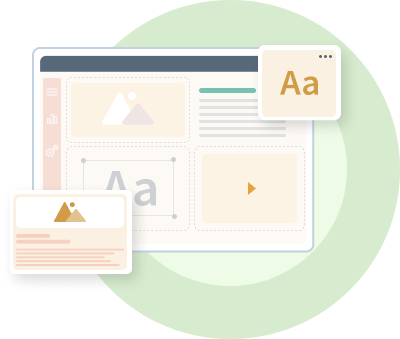
Learn more about Ad Copy:

For B2B ads, enticing offers and value adds could be:
Free content, like educational ebooks, research reports, or whitepaper downloads
Free live webinars or industry event signups
Free products trials, demos, or a consultation with experts
Monthly newsletter signups for exclusive industry tips and tricks
Time-sensitive discounts and promotions
Online community memberships to share best practices with other users
The headline should highlight the offer's benefit to the target audience. E.g., “Free on-demand demo: Expand your B2B business with Brand X" offers a free product demo and suggests business growth potential.

Some best practices for writing compelling headlines include:
- Keep it short: Most headlines are one or two lines maximum and often have a character limit.
- Use related keywords: Words like “free,” “discount,” and “limited-time offer” inspire customers to act quickly. Also, research what product or service-related keywords users might search for on the platform to include in the headline and body copy and improve the ad’s relevance, and response time.
- Appeal to a user’s emotions: Ad headlines that evoke a sense of scarcity (e.g., “Only 10 left in stock”) or appeal to a customer’s fears or immediate needs (e.g., “Don’t waste your ad budget”) will inspire customers to want to learn more.
- Be conversational and playful: Using phrases that ask a question (e.g., Did you hear?) or are playful (e.g., It’s like LinkedIn and ChatGPT had a baby) will quickly capture a user’s imagination and attention.

Here are some best practices to appeal to such key decision-makers in ad copy:
- Feature compelling stats: Or results (e.g., “20% higher profits” or “Get 2X more leads”) from a recent research report.
- Customer testimonials or quotes: Are also helpful (e.g., “It exceeded our expectations” or “The customer service team went above and beyond”), and appeal to a buyer’s need to succeed in their jobs, or their fear of selecting the wrong solution.
- Be confident and authoritative: The tone should convince higher-ups that they can trust the brand as an authority by using words like “High ROI,” “Experts,” “Effective,” “Strategic,” and “Optimize.”
- Demonstrate cost-savings: Show how much a potential buyer might save on costs by using phrases like “Get 30% off,” or “Save $150 per year” to incite them to reach out immediately.
- Lure them in gently: If buyers are wary of paying right away, lure them in with offers like “Try before you buy,” and “Free 30-day trial.”
To write powerful ad copy for potential buyers at the right time in the purchase funnel, marketers must first clarify their ad campaign goals. To do so, they should consider the following:
- How will the ad campaign and copy impact the overall marketing strategy? Is the campaign goal to grow sales revenue via an ecommerce website, build a list of qualified leads via a content download form, or drive more visitors to a branded website or landing page?
- What stage is the target customer at in their purchase funnel? Is it awareness, interest, desire, or action?
- What action do advertisers want the audience to take after seeing the ad? For example, is the CTA to signup, learn more, buy, download, or try for free?
Articulating clear ad goals helps copywriters create focused, compelling messaging to drive better results.
Before creating an online ad for a specific platform, explore about the following:
Headline and copy character limits
Text ad recommendations
Image sizes in pixels (e.g., 360 x 360) by shape (e.g., horizontal, vertical, and square)
Preferred text-to-image ratios (e.g., 1:1, 2:3, or 4:5)Recommended file types (e.g., JPG, PNG, or GIF) and sizes (e.g., 5 MB)
CTA guidelines and options
URL requirements (e.g., prefixes like https:// and maximum URL character limits)
Restricted content (e.g., no mention of alcohol, tobacco, and no use of profanity)
For example, the LinkedIn specifications for single-image ads allow 70 characters for the headline and 150 for the introductory text. For a text ad, copywriters can only use 25 characters in the headline and 75 in the description.
An ad copywriter or designer must know these unique specifications to ensure ad copy compliance and avoid delays that may affect campaign start dates and results.

















